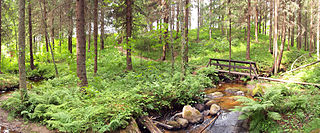Math Trail FAQ’s
What is a math trail?
A math trail is a guided walk through a locale where you stop at particular sights to think about math problems that arise naturally from the environment. A math trail is a fun way to practice and apply skills and strategies.
Who are math trails for?
Math trails are for everyone. Everyone studies math in school. Everyone uses math. Math trail problems should be interesting and accessible to people at all levels of age and experience. The participants of a math trail work collaboratively to respond to the problems posed by discussing how to approach problems and comparing their thinking.
Why use math trails with students?
The trail helps participants to connect mathematics to their local surroundings. During a trail, participants are active physically, mentally, and socially. They get to work together, they get to see that math can be found in just about anything and anywhere, and they get to use their own thinking. By discussing and verifying their thinking with fellow learners, students build confidence in solving problems. Lots of the problems will call for estimates that will motivate students to use nonstandard measurement such as stride and arm span.
What do you do after a group finishes a trail?
Teachers should facilitate a class discussion where students share their strategies used to solve the problems and their results. Most of the problems will have more than one “correct” answer. Celebrate the diversity of strategies. Debrief the social aspects of the experience—how did your group work together? What went well; how could you do better next time? Ask for feedback—were there any questions that should be tossed or are there ideas for other questions?
How do I blaze my own math trail?
Choose a location. Then put on your mathematical glasses and walk through the environment, seeing everything through a mathematical lens. Take photos, brainstorm questions. Try to come up with a variety – easy, medium, hard questions for your target participants. You can make a map or make a photo assisted guide. You also will want to research background information for your sight. Math trails typically have science, social studies, or art connections. You can also have students generate questions for their own math trails. Below are some websites that you can visit if you want to learn more:
http://www.exploratorium.edu/geometryplayground/mathtrails.php
http://britton.disted.camosun.bc.ca/geometry/NCTM_Math_Trail.pdf
http://britton.disted.camosun.bc.ca/geometry/mathtrail.html
Click here for a math trail created for the UAS campus by Tina Pasteris UAS Math Trail (1)
